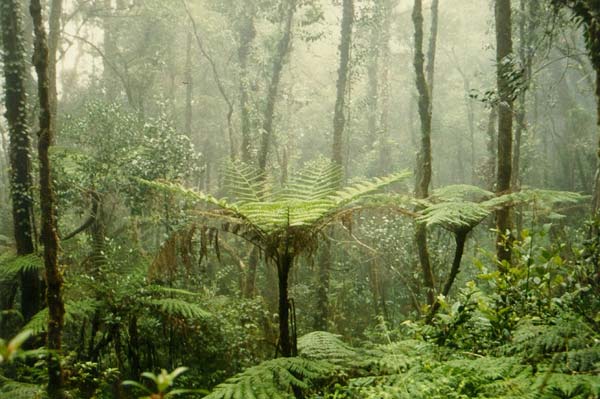Humans Managed Rainforests of Southeast Asia for Thousands of Years

The "untouched" rainforests of Southeast Asia may have been more manhandled than previously thought.
In present-day Borneo, Sumatra, Java, Thailand and Vietnam, humans started burning and managing forests to make way for food-bearing plants as early as 11,000 years ago, soon after the end of the last ice age, a new study suggests.
"It has long been believed that the rainforests of the Far East were virgin wildernesses, where human impact has been minimal," study researcher Chris Hunt, a paleoecologist at Queen's University Belfast, said in a statement. "Our findings, however, indicate a history of disturbances to vegetation." [Earth's Plant Life from Space in Photos]
Hunt added that these changes in vegetation do not coincide with any known period of climate change, but rather have "been brought about by the actions of people."
Ancient people of Southeast Asia didn't exactly replace their tropical forests with rows of cereal crops and pens of domesticated animals — the features that are typically associated with the dawn of agriculture, at least in the Eurocentric view, Hunt and colleagues explained in the Journal of Archaeological Science last month. Rather, the region's inhabitants may have developed more nuanced systems of subsistence that often worked alongside traditional hunting and gathering before rice-growing and other crop farming became widespread, the researchers say.
Humans, for example, seem to have set fire to forests in the Kelabit Highlands of Borneo to clear land in order to plant food-bearing trees.
"Pollen samples from around 6,500 years ago contain abundant charcoal, indicating the occurrence of fire," Hunt said. "However, while naturally occurring or accidental fires would usually be followed by specific weeds and trees that flourish in charred ground, we found evidence that this particular fire was followed by the growth of fruit trees. This indicates that the people who inhabited the land intentionally cleared it of forest vegetation and planted sources of food in its place."
Sign up for the Live Science daily newsletter now
Get the world’s most fascinating discoveries delivered straight to your inbox.
Hunt also pointed to evidence that the New Guinea sago palm — a plant that yields the starchy staple food sago — first appeared over 10,000 years ago along Borneo's coastline.
"This would have involved a voyage of more than 2,200 kilometers [1,367 miles] from its native New Guinea, and its arrival on the island is consistent with other known maritime voyages in the region at that time — evidence that people imported the sago seeds and planted them," Hunt said in a statement.
Follow Megan Gannon on Twitter and Google+. Follow us @livescience, Facebook & Google+. Original article on LiveScience.











